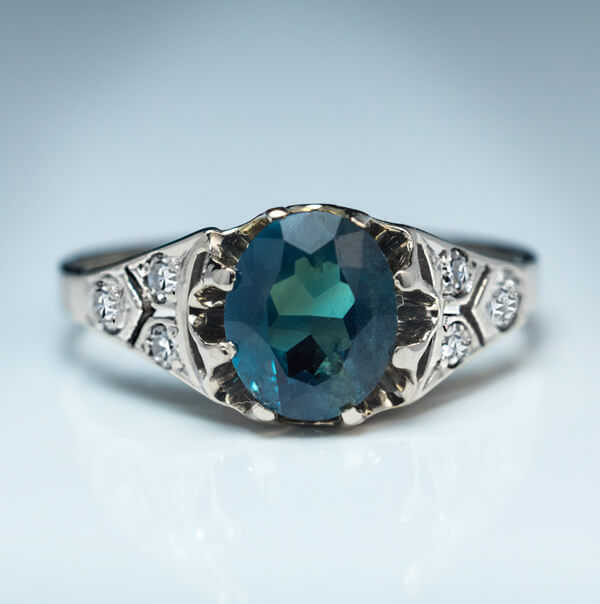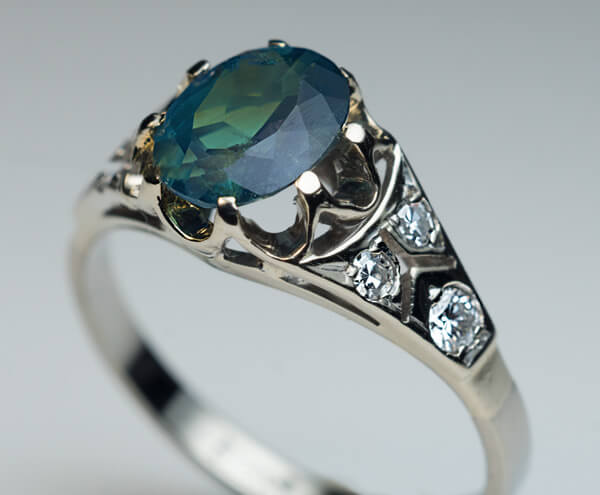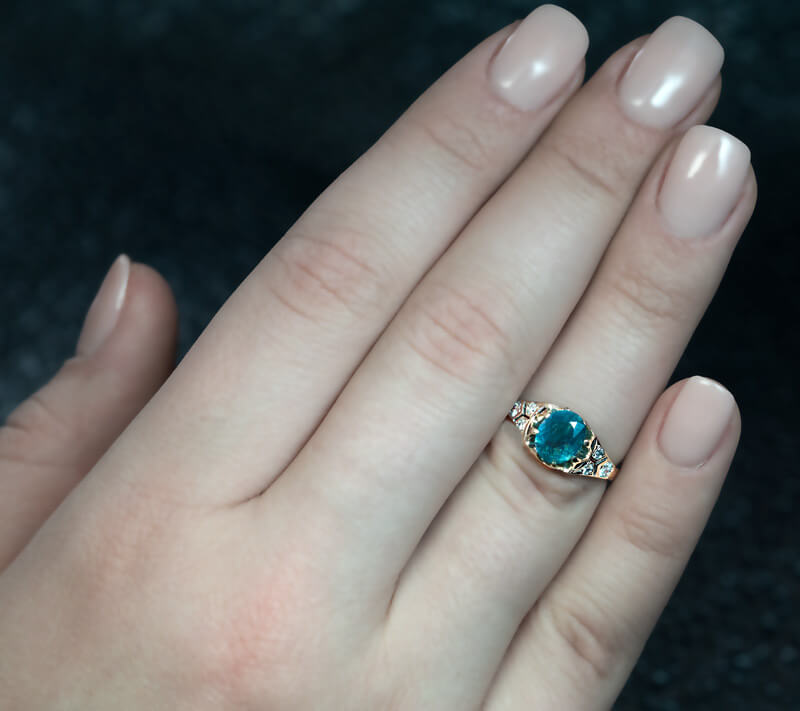Russian, circa 1960s
An 18K white gold ring is centered with a very rare natural Russian alexandrite from the Ural Mountains. The openwork shoulders are embellished with six diamonds.
The alexandrite measures 7.40 x 6.10 x 3.15 mm and is 1.07 ct.
The stone changes its dark bluish-green color to dark pinkish-purple in a candle light or yellow electric light.
The ring is marked with Soviet Russian 750 gold assay mark (18K) and maker’s mark.
Ring size 6 (16 mm) sizable
The color-change variety of Chrysoberyl was first discovered on April 17, 1834 in Russia’s Ural Mountains by the Finnish mineralogist Nils Gustaf Nordenskiold of the St. Petersburg Science Academy. He was amazed that at night, under candle light, the stone changed its color from an emerald green to a reddish purple.
He named the newly discovered stone Alexandrite, in honor of Tsarevich Alexander (later Tsar Alexander II, ruled 1855-1881), who was turning 16 on the day of the discovery.
Alexandrite was a very rare stone even in the 1800s. Russian 19th century novelist Nicholas Leskov writes the following about the alexandrite, “the mines from which the best alexandrites were mined got flooded by a river therefor alexandrite can be rarely found among Russian jewelers, for foreign jewelers and gem cutters, they have only heard about it.”
Russia officially stopped mining alexandrites in 1995 due to the exhaustion of the mine.
Russian alexandrite jewelry is extremely rare. This is only the 4th alexandrite ring we were able to find in the last five years, and only the 2nd with 1 carat alexandrite.
WE HAVE THREE VIDEOS OF THIS PIECE
TO PLAY THE VIDEO AGAIN CLICK ON REFRESH / REPLAY BUTTON
CHOOSE HD QUALITY IN SETTINGS ON YouTube



